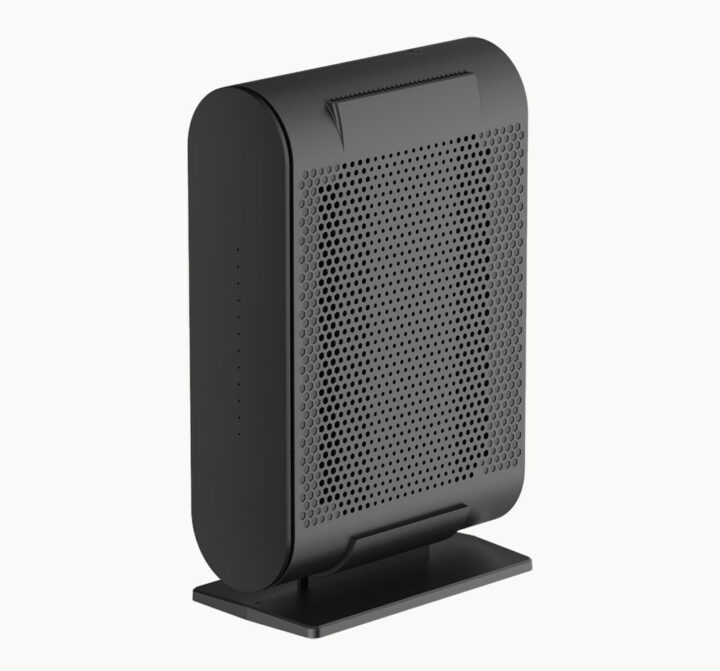We’ve just written about a Qualcomm IPQ8072A SBC/reference design with two 10GbE ports and WiFi 6 that’s good for companies wanting to design their own system, but if you’re looking for a dual 10GbE router there are already options, notably QNAP QHora-310W sold for $329 on Amazon.
But another dual 10GbE router with WiFi 6 was brought to my attention from a company I had never heard of. Acelink BR-6889AX is a WiFi 6 “AX3600 4T4R 10GE Router” based on Qualcomm IPQ8072A processor that’s suitable for the connected home and office networks including WFH use cases.
Acelink BR-6889AX specifications:
- SoC – Qualcomm Hawkeye IPQ8072A quad-core Cortex A53 @ 2.2GHz with dual-core multi-threaded network accelerator, In-line security engine
- System Memory – 512 MB DDR3 (2x 256MB)
- Storage – 4MB SPI NOR flash, 128MB NAND flash
- Networking
- Wired
- 2x 100/1,000/2,500/5,000/10,000Mbps BASE-T Ethernet (RJ45) ports with Link/Act, Speed LED
- 3x 10/100/1,000Mbps BASE-T Ethernet (RJ45) ports with Link/Act, Speed LED
- Wireless
- IEEE 802.11b/g/n/ax WiFi 6 2.4GHz 1024QAM up to 1200Mbps
- IEEE 802.11a/n/ac/ax WiFi 6 5GHz 1024QAM up to 2400Mbps
- Support for 4×4 MU-MIMO/OFDMA at 2.4GHz and 5GHz
- 4x Internal Dual-band Antenna
- Optional BLE (CSR8811) plus antenna
- Wired
- USB – 1x USB 3.0 Type-A connector
- Expansion – 1x M.2 socket with PCIe 3.0 & USB3.0 support (for 4G/5G cellular connectivity)
- Misc – Power and Reset buttons, LEDs
- Dimensions – Clearly incorrect (“192 x 200 x 172 mm”, or it’s the package). PCB: 180 x 180 mm
- Temperature Range – 0 ~ 40°C
Somehow, Acelink thought it was a good idea to provide a product page without a photo of the ports at the back of the router, so we’ll have to trust the specifications. There’s no information about software, but we can assume the system runs a Linux OS based on Qualcomm SDK or OpenWrt.
I was unable to find the router for sale, and only a few older WiFi routers/dongles from the company are listed online, so Acelink may focus on the ODM/OEM market. I contacted the company yesterday for additional information, including how to buy samples, but I’ve yet to receive an answer. I’ll update the post once/if I receive an answer.
Thanks to TLS for the tip.

Jean-Luc started CNX Software in 2010 as a part-time endeavor, before quitting his job as a software engineering manager, and starting to write daily news, and reviews full time later in 2011.
Support CNX Software! Donate via cryptocurrencies, become a Patron on Patreon, or purchase goods on Amazon or Aliexpress







I really expected WiFi 6e to be the standard on all new devices by now, it’s a no-go for me without it.
Wow, talk about limiting your options. 6E is mostly pointless, UNII-4 on the other hand is a lot more useful. So far only Synology has announced support for it though.
Why is it pointless, can you explain please?
Never heard about UNII-4. But If check the table on Wikipedia.
It looks like that band is also reserved for DSRC (802.11p) for V2X applications.
I’d just go for a Solid-Run board. If you want cheapest possibe 10GbE router, pick a GT8K. $221 If you want dual 10Gbit, pick a MacchiatoBin Single Shot. $349 If you want a more hefty router, pick a Honeycomb. $700 If you want a more serious router, pick a ClearFog CX LX2 with 100Gbit + 4x10Gbit. $1000. Note: The GT8K does not have two 10GbE ports, but it does connect the switch via 2.5Gbit and there is an additional GbE port, so it should be possible to get 3.5Gbit using Link-aggregation – OR – you could just use the GbE… Read more »
While I agree with you regarding the choice of Solidrun boards, in general converting a switch to a router is a not a good idea. Usually these devices employ a very poor SoC for the management, and the SoC itself is connected to the switch using a low bandwidth port (just for management) and configures it via I2C. There are a few exceptions to this rule. Some low port count switches are made from the SoC’s internal switch, easily allowing to split all ports and see them at native speed inside the device. A number of AR71xx devices were like… Read more »